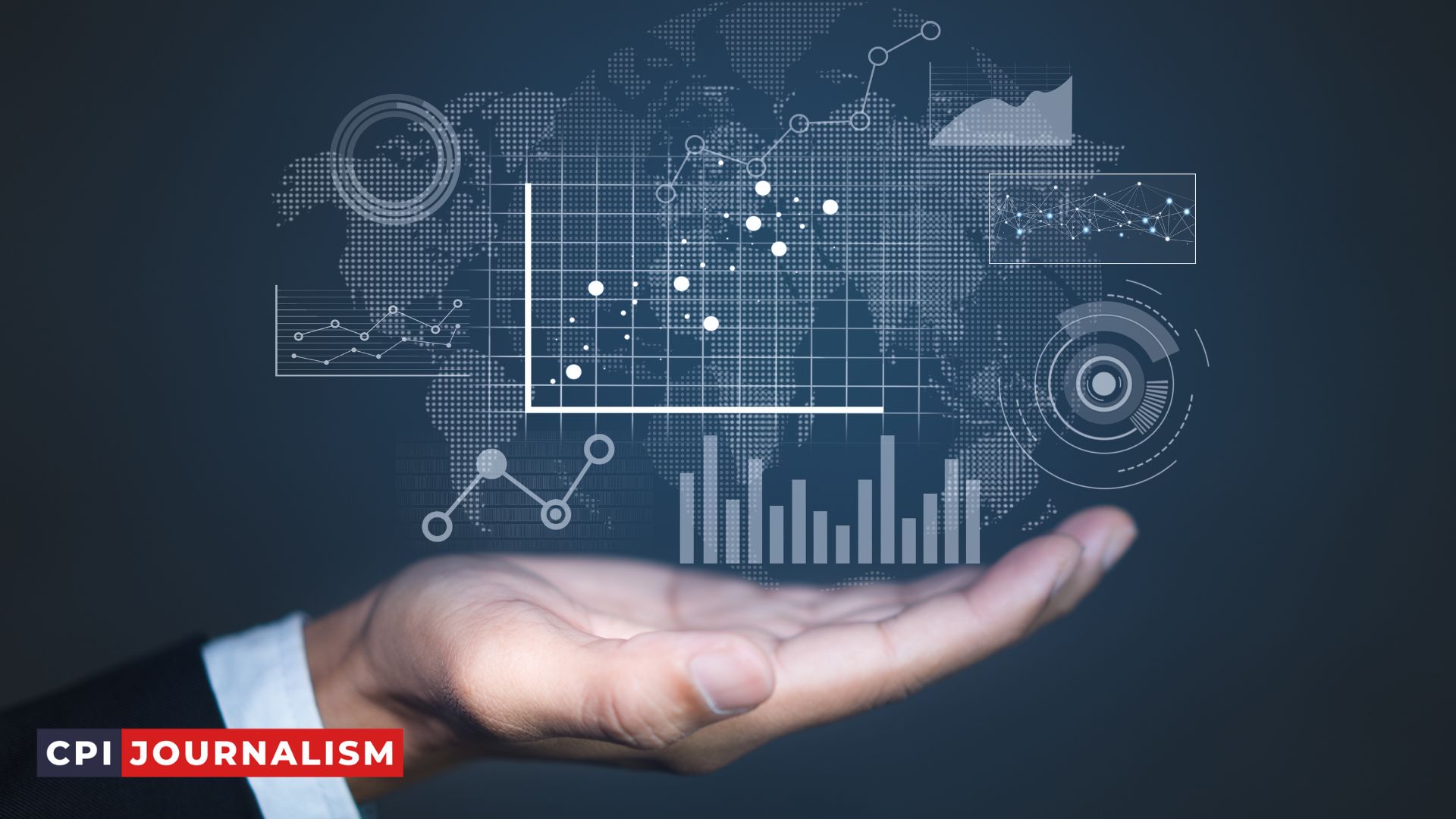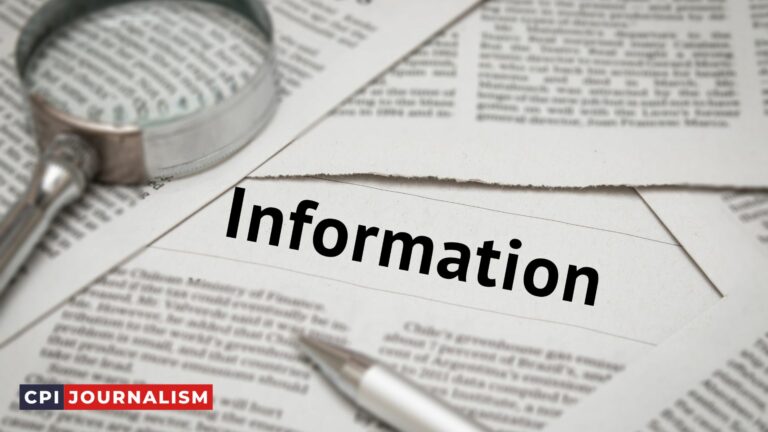How Do Journalists Use Technology And Data Analysis In Investigating Stories?
As an experienced journalist, I have been asked to share my thoughts and experiences on how technology and data analysis are being used in investigative journalism.
With advances in technology, journalists are now able to uncover stories and information in ways that were not possible before.
In this article, I will discuss how journalists use technology and data analysis to investigate stories and why this is so important in modern journalism.
I will also cover the challenges that come with using technology in investigative journalism and provide advice on how to get started in this field.
A. Overview of How Journalists Use Technology and Data Analysis in Investigating Stories
Technology and data analysis are powerful tools for investigative journalism. With the rise of digital media, these tools are becoming increasingly important for journalists who are seeking to uncover stories that would otherwise be out of reach.
From collecting and analyzing data to using the internet to uncover sources and information, technology and data analysis can be used to break new ground in journalism.
Data analysis is especially important for investigative journalists, as it can be used to uncover patterns and connections between sources, facts and events.
Data can be analyzed to identify trends and correlations, which can then be used to build a narrative or to support a story. This allows journalists to make sense of complex information and to build a compelling narrative around it.
Technology also plays a key role in investigative journalism. For example, journalists can use the internet to find sources, to research stories and to uncover information that would otherwise be inaccessible.
Social media can also be used to find sources, to track trends and to monitor the news to stay up to date on the latest developments.
In addition, technology can be used to create interactive stories or multimedia content, which can help to engage readers and to make stories more compelling.
Overall, technology and data analysis are essential tools for investigative journalism. By using these tools, journalists can uncover stories, make sense of complex information, and build compelling narratives around their findings.
Technology and data analysis can help journalists to break new ground in investigative journalism and to tell stories that otherwise would not be told.
II. Benefits of Technology and Data Analysis in Journalism
For journalists, the use of technology and data analysis has become a vital tool for conducting investigative journalism. With advancements in technology and data analysis, journalists can now uncover information that would have been impossible to access before.
In addition to the ease of access to data, technology and data analysis have provided journalists with a range of powerful benefits.
The most important benefit of using technology and data analysis in journalism is the ability to uncover stories that are often hidden from the public.
By analyzing large amounts of data and developing complex algorithms, journalists can discover patterns, trends, and correlations that can be used to uncover stories that may have otherwise been overlooked or buried.
This can be particularly beneficial in investigative journalism, where journalists are tasked with uncovering hidden facts and uncovering the truth behind complex stories.
In addition to uncovering hidden facts and stories, technology and data analysis can also be used to identify patterns and trends in the data.
This can be used to provide valuable insight into stories, as well as to identify areas in which further investigation is needed. By analyzing data and trends, journalists can then focus their investigations on the most important and relevant aspects of a story.
Finally, technology and data analysis can be used to verify facts and evidence. By analyzing data, journalists can compare and contrast facts, identify discrepancies, and draw conclusions about the accuracy of information.
This helps to ensure that the stories journalists report are accurate and provide a true representation of the events.
In conclusion, technology and data analysis have become an invaluable tool for journalists in their investigations.
By utilizing the powerful tools available, journalists can uncover hidden stories, identify patterns, and verify facts and evidence. This has enabled journalists to produce more accurate and reliable investigative journalism.
A. Increased Efficiency
As an experienced journalist, I can confidently say that technology and data analysis are essential tools in the investigation of stories. With the right technology, journalists can quickly and efficiently find the information they need to uncover the truth.
By utilizing data analysis, journalists can identify patterns and make connections that may have otherwise gone unnoticed.
For example, journalists can use data analysis to detect anomalies that may indicate a story’s potential. By analyzing large amounts of data, journalists can quickly identify trends and outliers that could lead them to a story.
Data analysis also allows journalists to quickly identify patterns that can be used to build a strong, evidence-based story.
Data analysis also allows journalists to quickly and efficiently compare data from different sources to identify correlations and discrepancies. For example, journalists can analyze election data to determine if there is evidence of fraud or manipulation.
Similarly, journalists can use data analysis to compare data points from different sources to identify discrepancies and inconsistencies that might indicate a story.
Data analysis tools also allow journalists to quickly and easily visualize data. Visualizations are incredibly helpful in identifying patterns and trends that can be used to create an evidence-based story.
By visualizing data, journalists can better understand the information they are looking at and identify the key points that need to be included in their story.
Overall, technology and data analysis allow journalists to quickly and efficiently investigate stories.
By using data analysis tools, journalists can quickly identify patterns, compare data points, and visualize data to uncover the truth and create an evidence-based story.
B. Improved Accuracy
As an experienced journalist, I’m sure you understand the importance of accuracy in reporting. Technology and data analysis can help you to ensure that your stories are accurate and up-to-date.
By using advanced technology and data analysis, you can gain access to a variety of sources that can help you to verify your facts and figures. For instance, if you are writing a story on a particular topic, you can use data analysis to look at various sources and corroborate your findings.
In addition, you can use technology to quickly and accurately spot errors in your work. By using spell checkers, plagiarism checkers, and other tools, you can find and fix errors quickly and easily. This ensures that your stories are accurate and credible.
Finally, technology and data analysis can help you to quickly and accurately analyze large amounts of data.
For instance, if you are writing a story on a particular company or industry, you can use data analysis to quickly and accurately understand the financials of the company or industry. This helps you to ensure that your stories are accurate and up-to-date.
Overall, technology and data analysis can help you to significantly improve the accuracy of your stories. By using advanced tools, you can quickly and easily verify facts and figures, spot errors, and analyze large amounts of data. This helps you to ensure that your stories are accurate and up-to-date.
C. Enhanced Reach
Today’s journalists have access to more technology and data analysis tools than ever before. This allows them to extend their reach beyond the traditional bounds and investigate stories in far-reaching places.
With the right technology and data analysis tools, journalists can access data from around the world and connect the dots to uncover stories that would have otherwise gone unnoticed.
For example, a journalist can use data analysis and technology to track the sources of a story, from the initial news reports to the people it affects.
By tracking this data, journalists can gain a more comprehensive view of the story and better understand the context in which it is unfolding. This helps them to uncover stories that may have otherwise gone unnoticed, or to explore the deeper implications of a story.
Data analysis and technology also enable journalists to expand the scope of their stories. By collecting data from multiple sources, journalists can build a more complete picture of a story or event and look at it through multiple lenses.
This can help them uncover a story’s nuances and provide a more accurate and thorough account of what happened.
In addition, technology and data analysis can provide journalists with access to a wider audience. Journalists can use technology and data analysis to identify the demographics and interests of their readers, and tailor their stories to meet the needs of their readers.
This helps them to engage their readers more effectively and build a larger audience for their work.
By leveraging technology and data analysis, journalists can extend their reach and uncover stories that would have otherwise gone unnoticed. This allows them to provide a more accurate and comprehensive account of events and engage a larger audience with their work.
D. Increased Accessibility
As experienced journalists, we understand the importance of technology and data analysis in investigating stories. One of the biggest advantages of using technology and data analysis is increased accessibility.
With the advent of the internet, journalists have access to a wealth of information, from sources all around the world.
Data analysis tools have allowed us to quickly parse through large volumes of data and uncover trends, correlations and patterns that may have otherwise gone unnoticed.
In addition, technology and data analysis have enabled us to connect with sources who may not have been accessible to us in the past. We can now access public records and databases, allowing us to quickly and easily find information related to our stories.
We can also use social media to reach out to potential sources and build relationships with them, increasing our access to insider information and tips.
Finally, technology and data analysis have allowed us to make more informed decisions when it comes to our stories. By using tools to perform data analysis and gather insights, we can make more informed decisions on the direction of our stories.
We can also use data to verify our sources and uncover discrepancies, allowing us to ensure that our stories are based on accurate information.
In conclusion, technology and data analysis have provided us with increased access to information and sources, enabling us to produce more accurate and in-depth stories.
By taking advantage of these tools, we can ensure that our stories are based on reliable information and sources.
E. Improved Collaboration
Over the years, technology and data analysis have greatly improved collaboration between journalists. In the past, journalists would often have to work alone, relying on their own skills and expertise to investigate stories.
With technology and data analysis, journalists are now able to collaborate with other journalists, researchers, and experts from around the world to find the information they need quickly and accurately.
The ability to quickly and accurately share data and research from one journalist to another has increased the quality and depth of investigative stories.
Journalists are now able to quickly and easily access data from databases, social media, and other sources of information, which can be used to help inform their stories.
Additionally, technology and data analysis have enabled journalists to collaborate with others to create stories that are more in-depth and comprehensive.
For example, journalists can now access and share research from around the world in a fraction of the time it used to take. This allows journalists to quickly access information and resources that would have previously taken much longer to find.
Additionally, journalists can now quickly and accurately share and compare information with other journalists and researchers, enabling them to create more comprehensive stories.
Finally, technology and data analysis have enabled journalists to collaborate with experts from around the world to gain valuable insights that can be used in their stories.
This is especially important for investigative stories, which often require a great deal of research and analysis to uncover the truth. By collaborating with experts, journalists can ensure that they are getting the best information possible to create an accurate and informative story.
In conclusion, technology and data analysis have vastly improved collaboration between journalists and researchers.
Journalists are now able to quickly and accurately access and share information from around the world, enabling them to create more comprehensive stories.
Additionally, journalists can now collaborate with experts to gain valuable insights for their stories.
All of these advancements have improved the quality and accuracy of investigative stories, allowing journalists to uncover the truth and inform the public.
Examples Of Technology And Data Analysis Used In Journalism

Journalists use a wide range of technologies and data analysis techniques to investigate stories. Here are some of the most common examples:
1. Big Data Analysis: Big data analysis involves using sophisticated algorithms to analyze large data sets in order to find patterns and trends. This type of analysis is used to investigate stories related to public health, economics, politics, and other topics.
It can be used to track the spread of a disease, identify potential sources of corruption, uncover hidden financial relationships, and more.
2. Natural Language Processing: Natural language processing (NLP) is a type of artificial intelligence that enables computers to understand, interpret, and process human language.
This technology can be used to analyze large amounts of text-based data and uncover patterns and trends that would be difficult to detect by other means. Journalists often use NLP to investigate stories related to politics, public opinion, and social media.
3. Computer Vision: Computer vision is a form of artificial intelligence that enables computers to “see” and recognize images, videos, and text. It is often used to analyze images, videos, and other visual data in order to uncover hidden stories and trends.
For example, computer vision can be used to analyze video footage of protests and identify potential sources of violence.
4. Machine Learning: Machine learning is a type of artificial intelligence that enables computers to learn from data and improve their performance without being explicitly programmed.
This technology can be used to analyze large amounts of data in order to uncover patterns and trends that would be difficult to detect by other means. It is often used to investigate stories related to public health, crime, and economics.
These are just some of the most common examples of technology and data analysis used in journalism. As technology continues to evolve, new tools and techniques are becoming available, giving journalists even more powerful tools to investigate stories.
A. Social Media
Social media is an invaluable source of information for journalists investigating stories. It connects them with sources and provides them with a wealth of information.
Social media platforms, such as Twitter and Facebook, allow journalists to search and browse for newsworthy content. Through these networks, they can find newsworthy stories, learn of events, and find sources to interview.
Twitter is particularly useful for journalists, as it allows them to follow topics and trends, and to stay informed on the latest news.
It also provides a platform to spread stories and encourages engagement with readers. Journalists can use Twitter to increase the reach of their stories, as well as to generate leads and find sources.
Facebook is another important social media platform for journalists. It allows them to connect with potential sources, as well as to post stories and engage with their readers. Journalists can also use Facebook to learn of events and to share stories.
In addition to Twitter and Facebook, there are a variety of other social media networks that can be utilized by journalists. Instagram, Snapchat, and LinkedIn are all powerful tools for connecting with sources, engaging with readers, and discovering stories.
Overall, social media is a powerful resource for journalists. It provides them with a wealth of information, as well as a platform for connecting with sources and engaging with readers. Through social media, journalists can access newsworthy stories, learn of events, and spread their stories.
1. Monitoring Trends
As a journalist, it is important to stay ahead of the curve and monitor the latest trends in the news industry. Technology and data analysis can be used to track current trends and identify potential stories in order to stay ahead of the competition.
One way to track trends is to use industry-specific data analytics tools, such as Google Trends or Twitter Analytics.
These tools can provide detailed insights into the topics that people are talking about, as well as how these topics are evolving over time. This data can be used to identify potential stories, or to provide additional context to an existing story.
In addition to industry-specific analytics, journalists can also use traditional news monitoring tools, such as news aggregators, to track emerging stories.
News aggregators can provide a broad overview of the news landscape and help identify potential stories to pursue.
Finally, journalists should also monitor other journalists and publications for potential story ideas. By staying up-to-date on the latest news from other sources, journalists can gain an understanding of the hot topics and stories that are being covered, and use this information to develop their own stories.
2. Gathering Information
Gathering information is the first and most essential step in investigating stories as a journalist. Technology and data analysis have revolutionized the way we can collect and process information.
For starters, the internet is an invaluable tool for collecting information. With the help of search engines, social media, and other online resources, the gathering process is faster and more efficient than ever before.
Reputable news sources, such as newspapers, magazines, and websites, can provide a wealth of information. Additionally, more specialized sources, such as government documents and academic journals, can offer valuable insights as well.
Data analysis also plays an important role in gathering information. By analyzing data sets, journalists can uncover patterns and trends that may not be immediately obvious.
For example, journalists can use data analysis to uncover previously unknown connections between people, organizations, and events. This can help reporters uncover stories that would not be possible with traditional reporting methods.
Finally, technology can help journalists track down leads. By using geolocation services, reporters can pinpoint the exact location of a person or event.
This can be especially helpful in cases where time is of the essence, such as when a major story breaks. Additionally, journalists can use social media to connect with sources and uncover leads.
Gathering information is a crucial part of any investigative journalism project, and technology and data analysis can greatly improve the gathering process.
By taking advantage of the technology and data analysis available to them, journalists can uncover stories that would otherwise remain hidden.
3. Connecting With Sources
As an experienced journalist, I cannot emphasize enough the importance of connecting with sources in any investigative story. Connecting with sources is essential in uncovering the facts and nuances of any story.
Technology and data analysis can be incredibly helpful tools in connecting with sources, as they can help you quickly and easily identify key individuals who may have useful information to share.
First, social media can be an invaluable tool for connecting with sources. By leveraging the power of sites like Twitter, Facebook, and LinkedIn, you can easily identify and connect with potential sources.
Twitter in particular can be an incredibly useful tool for connecting with sources, as it allows you to search for keywords and phrases related to your story and find people who may have relevant insights or information to share.
Second, data analysis can also be used to identify potential sources. By analyzing data from public records, research databases, and other sources, you can quickly and easily identify individuals who may have important information related to your story.
Additionally, data analysis can also be a powerful tool for uncovering connections between people and organizations.
Finally, technology can also be used to facilitate communication with sources. By using email, video chat, text messaging, and other digital tools, you can easily and quickly contact potential sources and arrange interviews or other forms of communication.
In conclusion, technology and data analysis can be incredibly helpful tools in connecting with sources. By leveraging the power of social media, data analysis, and digital communication tools, you can quickly and easily identify and connect with potential sources.
As an experienced journalist, I cannot emphasize enough the importance of connecting with sources in any investigative story.
B. Data Analysis
Data analysis is an important part of investigative journalism as it can provide journalists with the evidence needed to expose wrongdoing. To do this, journalists need to be able to understand and interpret data sets in order to draw meaningful conclusions.
There are a number of tools that journalists can use when conducting data analysis. These include:
1. Spreadsheets: Spreadsheets can be used to collect, store, and organize large amounts of data. They can also be used to perform calculations and statistical analysis.
2. Statistical software: Statistical software, such as SPSS and R, can be used to analyze large amounts of data and to generate charts and graphs.
3. Data visualization tools: Data visualization tools, such as Tableau and QlikView, can be used to create interactive charts and graphs to help explain complex data sets.
These tools can help journalists to quickly identify trends and patterns in data sets and to draw meaningful conclusions. Journalists can also use them to verify information and to uncover evidence of wrongdoing.
Data analysis is an important tool for investigative journalists. By using data analysis tools and techniques, journalists can uncover hidden stories and expose wrongdoing.
1. Data Mining
Data mining is an essential part of the investigative reporting process. Data mining is the process of collecting, organizing, and analyzing large sets of data to uncover patterns, trends, and correlations that may be used to inform decisions and answer questions.
It is a powerful tool for investigative journalists, providing them with access to troves of information that can be used to uncover stories that would otherwise remain hidden.
Data mining can be used to identify sources and contacts for stories, to uncover relationships between people, organizations, and events, to identify trends, and to discover patterns and correlations.

For example, a journalist might use data mining to compare the public records of politicians to identify any potential conflicts of interest, to track a company’s stock performance over time, or to analyze a large set of social media data to uncover public opinion on a particular topic.
Data mining can also be used to identify potential sources for stories. Journalists can use data mining to identify and contact people who may have knowledge or information related to a particular story.
This can be done by searching through large databases of public records, such as voter registration databases or social media profiles, to identify potential sources.
Data mining can also be used to analyze and compare large amounts of data. Journalists can use data mining to compare datasets to identify trends and correlations, or to analyze large sets of social media data to identify public opinion on a particular topic.
By utilizing data mining techniques, journalists can uncover hidden stories and uncover information that would otherwise remain hidden. It is a powerful tool that can be used to uncover stories, identify sources, and analyze large sets of data.
2. Data Visualization
Data visualization is an essential tool for journalists investigating stories, as it provides a visual representation of data that can be quickly and easily understood.
Data visualization allows journalists to quickly identify trends and patterns in the data that may not be immediately apparent through traditional data analysis techniques.
Data visualization tools can be used to create charts, graphs, and maps that quickly communicate complex data sets. These tools enable journalists to identify patterns or correlations between variables, as well as to illustrate trends in the data over time.
Journalists can also use data visualization to compare different data sets side by side, or to compare the same data set across different time periods.
Data visualization is also used to create interactive graphics to help readers explore the data in greater depth. These interactive graphics offer readers the opportunity to click on different elements to view additional details regarding the data.
Data visualizations can also be used to create compelling stories that capture the attention of readers. By combining data with visuals, journalists can create compelling stories that illustrate the data in a visual and engaging way.
Finally, data visualizations can be used to help readers easily understand complex data sets. By displaying data in a visual format, readers can quickly grasp the key points of the data without having to spend time reading through long reports.
This makes it easier for readers to digest the data and form their own opinions on the story.
3. Natural Language Processing
Journalists use Natural Language Processing (NLP) to analyze and interpret textual data from sources such as articles, social media posts, and documents. NLP can help journalists uncover hidden trends and patterns in the data that could otherwise go unnoticed.
For example, NLP can be used to identify key phrases, words, and topics in a text corpus. This can be used to compare and contrast different sources to determine which sources are more reliable.
NLP can also be used to uncover meaning within complex texts. For instance, NLP can be used to interpret meaning in unstructured texts, such as those found in social media posts.
By using NLP, journalists can extract insights from large volumes of data and draw conclusions that can be used in their reporting.
NLP can also be used to detect sentiment within text. For example, a journalist can use NLP to identify positive and negative sentiment in a text corpus. This can be used to identify sources with a particular bias or to measure how public opinion changes over time.
Overall, NLP is an invaluable tool for journalists. It can be used to identify trends and patterns, uncover meaning in complex texts, and detect sentiment. By leveraging NLP, journalists can gain insights that can inform their reporting and help them uncover important stories.
4. Machine Learning
For investigative journalists, machine learning can be a powerful technique for uncovering stories and gaining new insights into complex data sets.
By leveraging the power of deep learning, artificial intelligence, and natural language processing, machine learning can be used to uncover patterns, trends, and correlations that may have been difficult to detect using manual processes.
For instance, machine learning can be used to quickly identify patterns in large data sets, allowing journalists to quickly surface connections between entities, people, and events.
Machine learning algorithms can also be used to surface anomalies in data, such as suspicious activity or outliers, which could point to potential stories or trends.
In addition, machine learning can be used to quickly detect and surface trends in data. By analyzing multiple data points, journalists can gain an understanding of the overall trends in a data set, which can help them identify stories or uncover new information.
Overall, machine learning can be a powerful tool for investigative journalists. By leveraging the power of machine learning algorithms, journalists can quickly gain insights into their data sets that would otherwise be difficult to uncover.
As the use of machine learning becomes more commonplace, it will become increasingly important for journalists to understand its capabilities and how to effectively use it in their investigative work.
5. Artificial Intelligence
Artificial Intelligence (AI) is increasingly becoming an invaluable tool for journalists. AI can be used to identify patterns in data and help journalists draw conclusions from it.
AI can also be used to help journalists research, mine and analyze data, identify connections across datasets, and find patterns in the data that would otherwise have remained hidden.
AI can also be used to automate mundane and repetitive tasks so that journalists can focus on the more important, investigative aspects of their jobs.
AI-driven tools can be used to quickly search through archives, extract data and convert it into useful insights. AI-driven tools can also help journalists conduct sentiment analysis, or identify trends in news coverage.

AI can also be used to help journalists identify and verify sources. AI-driven tools can help journalists quickly assess the credibility of sources, identify any potential conflicts of interest and uncover any hidden links between sources. AI can also be used to predict and anticipate future events.
AI-driven tools can also be used to help journalists generate story ideas and angles. AI-driven tools can be used to identify topics of interests, analyze trends, and generate story ideas that are relevant to current events.
Overall, Artificial Intelligence is quickly becoming an indispensable tool for journalists. AI-driven tools can help journalists research and analyze data quickly and accurately, extract insights from data, identify patterns, verify sources, and generate story ideas.
AI is quickly becoming an invaluable tool for journalists in their quest for uncovering the truth.
IV. Challenges of Technology and Data Analysis in Journalism
Despite the many advantages of using technology and data analysis to investigate stories, there are also a number of challenges that journalists must be aware of when using this approach.
One of the most significant challenges is the need to be familiar with the different types of technology and data analysis tools available, and understanding the capabilities and limitations of each.
For example, not all data analysis tools are equally adept at analyzing large amounts of information, and journalists must be aware of this and take the time to find the right tool for the job.
Additionally, journalists must also be cognizant of the ever-evolving nature of technology and data analysis, as new tools and techniques are constantly being developed.
This can make it difficult for journalists to stay up to date on the latest developments, as well as the potential ethical implications of the technology and the data being used.
Finally, it is important for journalists to understand the potential bias that can be introduced when using technology and data analysis.
For example, certain algorithms can introduce bias by selecting certain types of data or sources, or by favoring certain types of stories. Journalists must be aware of these biases and be sure to take steps to minimize or eliminate them.
In conclusion, technology and data analysis can be an invaluable tool for investigative journalists, but it is important for them to be aware of the challenges involved.
By understanding the capabilities and limitations of the different tools available, staying up to date on the latest developments, and being aware of potential bias, journalists can be better equipped to use technology and data analysis effectively in their investigations.
A. Privacy Concerns
Journalists and data analysts must always be mindful of the privacy of their sources and the information they are using for their investigations. It is important to be aware of the legal implications and potential backlash that can arise when working with confidential data.
When considering the use of technology and data analysis in journalistic investigations, privacy must be a top priority.
Journalists must be mindful of laws and regulations, such as the General Data Protection Regulation (GDPR) in Europe, that protect the privacy of individuals and the data they share.
It is also important to consider the ethical implications of collecting and using data. Journalists should be aware of the potential risks that come with collecting and using data, and should take measures to ensure that the data is collected and used responsibly.
Journalists should also be aware of the potential for data breaches and other security risks, as well as the potential for data to be misused. Journalists should take measures to protect the data they collect and use, such as using encryption and secure storage solutions.
Finally, journalists should be aware of the potential for data to be manipulated or misinterpreted. Data analysis is a powerful tool, but it can be misused if not used responsibly.
Journalists should be aware of the potential for data to be manipulated or misinterpreted, and should take steps to ensure that the data is used accurately and responsibly.
B. Misinformation
Misinformation is a major hurdle that journalists face when using technology and data analysis to investigate stories. Misinformation can come from unreliable sources, or be purposefully spread to detract from the truth.
In order to ensure that the data being used is accurate and trustworthy, journalists must be careful to verify their sources.
When verifying sources, journalists must look for the original source of the data, identifying any potential bias or manipulation.
Journalists should also consider the context of the data to ensure that it is being reported accurately. For example, if data is being used to make a comparison, it should be from a similar time period and locale.
In addition to verifying data sources, journalists should also be aware of the potential for data manipulation.
This can include data being distorted or manipulated to support a particular narrative. Journalists should be aware of any potential manipulation in the data, and should seek to explain any discrepancies.
Finally, journalists should be aware of the potential for “fake news”, or misinformation created to deliberately mislead the public. This can be done by using false or inaccurate data, or by using data in a way that is meant to deceive or misinform.
To combat fake news, journalists should be sure to research the source of the data and to verify the accuracy of the data before publishing.
C. Lack Of Resources
One of the biggest challenges facing journalists seeking to use technology and data analysis in investigating stories is lack of resources. Many journalists do not have access to the necessary tools, software and data sources needed to conduct meaningful investigations.
This can make it difficult for journalists to go beyond basic reporting and uncover the deeper stories behind complex events.
For example, a journalist may need to access mission-critical data sources such as corporate financial records or government documents to uncover malfeasance or corruption. Without the right data sources, a journalist may have difficulty uncovering the truth.
Additionally, many journalists may lack access to sophisticated data analysis tools and software, such as statistical software or machine learning algorithms, which can be used to uncover complex patterns in data.
However, there are a few ways that journalists can overcome the resource constraints they face. Firstly, journalists can collaborate with other organizations, such as universities, think tanks, and NGOs, who may have access to the necessary data and software.
Additionally, journalists can look for free or low-cost tools and data sources, such as open-source software and open data repositories.
Finally, journalists can look for crowdsourced solutions, such as crowd-sourced datasets and crowdfunding campaigns, which can help to offset some of the costs associated with data and software.
In summary, lack of resources can be a major challenge for journalists seeking to use technology and data analysis in investigating stories. However, with the right strategies, journalists can find ways to overcome resource constraints and uncover the deeper stories behind complex events.
D. Cybersecurity Risks
When journalists use technology and data analysis to investigate stories, they must be aware of the potential cybersecurity risks that are associated with this process.
While the benefits of being able to access a wealth of digital data can be vast, it is important to remember that there is also the potential for malicious actors to gain access to sensitive information.
Journalists must take steps to ensure that the data they are working with is secure. This includes using strong passwords, enforcing two-factor authentication, and using secure, encrypted storage solutions.

Additionally, journalists should be mindful of the types of data they are accessing, and be sure to understand any applicable privacy laws in their jurisdiction.
When gathering evidence for a story, journalists must also be aware of the legal implications of what they are doing.
In addition to ensuring that the data they are accessing is secure, journalists should also be sure to understand any applicable laws that may pertain to the information they are collecting. This could include data privacy laws, copyright laws, and other such regulations.
Finally, journalists should be aware of their own reputation when using technology and data analysis to investigate stories.
It is important to remember that any information that is collected will be associated with the journalist’s name and reputation, so it is important to ensure that any information collected is accurate and reliable.
By taking steps to ensure the security of the data they are working with, understanding the legal implications of their work, and being mindful of their own reputation, journalists can ensure they are doing their work responsibly and ethically.
E. Unreliable Data Sources
When investigating a story, it is important for journalists to be aware of the source of their data. Unreliable data sources can lead to inaccurate conclusions and false reporting.
Here are some tips for identifying unreliable data sources:
1. Unproven or Unverified Data: Data from sources that have not been verified or proven to be accurate should be avoided. Journalists should always look for corroborating evidence when relying on a data source.
2. Outdated Data: Data that is outdated or no longer relevant should be avoided. Journalists should ensure that they are using the most up-to-date data available.
3. Inaccurate Data: Data that is inaccurate or has been manipulated should be avoided. Journalists should always double-check the accuracy of their data sources.
4. Biased Data: Data that is biased or skewed in favor of a particular viewpoint should be avoided. Journalists should ensure that they are using multiple, unbiased data sources to get a more accurate picture of the story they are investigating.
By being aware of these unreliable data sources, journalists can ensure that they are not making false or inaccurate claims in their reporting. It is important for journalists to always be mindful of the accuracy and reliability of their data sources in order to produce trustworthy, credible journalism.
V. Conclusion
As journalists, our goal is to uncover the truth, and technology and data analysis can be invaluable tools in helping us to achieve this.
By utilizing the right technology and data analysis tools, we can gain a deeper understanding of stories and uncover hidden patterns and trends. We can also use technology to verify facts and sources, and to ensure that our reporting is accurate and reliable.
Technology and data analysis can also help us to identify potential sources, find new angles and stories, and gain a better understanding of the landscape of our stories.
Ultimately, technology and data analysis can help us to tell better, more informed stories that make an impact on the world.
At the end of the day, technology and data analysis are tools that can be used to support our journalistic work, and they should be used with caution and responsibility.
It is important to use the right tools for the right job, and to ensure that our data is accurate and reliable. As experienced journalists, we must remember to use our judgement and common sense when relying on technology and data analysis in our reporting.
A. Summary of How Journalists Use Technology and Data Analysis in Investigating Stories
Journalists use technology and data analysis in a variety of ways to investigate and tell stories. Technology helps journalists to access, analyze, and share information more quickly and efficiently.
Journalists can use tools like search engines to locate sources and data, as well as social media to track trends and events.
Data analysis helps journalists to organize and interpret large amounts of information, so they can quickly identify trends and patterns that may otherwise be difficult to spot.
Journalists also use technology to communicate with sources and to create interactive content for the public. Finally, technology can be used to protect journalists and their sources from surveillance and censorship.
Technology and data analysis are increasingly essential for investigative journalism, and it is important for journalists to stay up-to-date on the latest tools and techniques.
B. Benefits and Challenges of Technology and Data Analysis in Journalism
Using technology and data analysis in journalism has revolutionized the way stories are investigated and reported.
Technologies such as artificial intelligence, machine learning, visual recognition, and natural language processing have enabled journalists to automate tedious and time-consuming tasks and have given them access to large, previously inaccessible datasets.
Data analysis can provide insights into trends, patterns, and anomalies that would otherwise be difficult to uncover, and technology can uncover stories that may have been overlooked before.
The benefits of technology and data analysis in journalism are far-reaching. First, these tools enable journalists to quickly gather and analyze data from a variety of sources.
By using technology to automate mundane tasks, journalists are able to focus their time and energy on more important tasks such as research, interviewing, and writing stories.
Technology and data analysis can also help journalists to more accurately and effectively report on complex stories. With the help of data analysis, journalists can uncover new stories and angles that may have otherwise been overlooked.
However, there are also challenges associated with technology and data analysis in journalism. For one, journalists need to be aware of the potential for bias and errors in their data analysis.
Journalists need to also be aware of the ethical considerations surrounding the use of technology and data analysis.
As data sets become increasingly complex and expansive, journalists need to be sure that they are not infringing on the privacy of individuals or revealing sensitive information.
Additionally, journalists need to be mindful of the accuracy and reliability of the data and technology they are using.
Overall, technology and data analysis can be powerful tools for journalists when used correctly and responsibly.
By utilizing these tools, journalists can uncover new stories, angles, and insights that may have been overlooked before, and they can automate tedious tasks that can take up a lot of time and resources.
However, as mentioned, there are also potential pitfalls that journalists need to be aware of, such as potential bias and errors in their data analysis.
Ultimately, technology and data analysis can be powerful tools for journalists when used carefully and responsibly.
C. Final Thoughts
As an experienced journalist, I have seen the impact that technology and data analysis can have on investigative stories.
From being able to quickly access public records to uncovering patterns and trends in complex data sets, technology and data analysis have proven to be invaluable tools for journalists.
However, it’s important to remember that technology and data analysis can only take us so far. While it’s an invaluable tool in our investigative arsenal, it’s still only part of the investigative process.
Technology and data analysis can provide us with the raw material to start an investigation, but it takes a good reporter to turn those raw materials into a compelling story.
At its core, journalism is still a craft. It relies on the skills of the journalist to ask the right questions, to verify facts, and to tell powerful stories. Technology and data analysis can aid us in this process, but it can never replace a good reporter.
In conclusion, technology and data analysis provide us with powerful tools to help us investigate stories more efficiently and thoroughly.
However, it’s important to remember that technology and data analysis are only part of the investigative process. In the end, it takes a good reporter to turn the raw materials provided by technology and data analysis into a compelling story.







